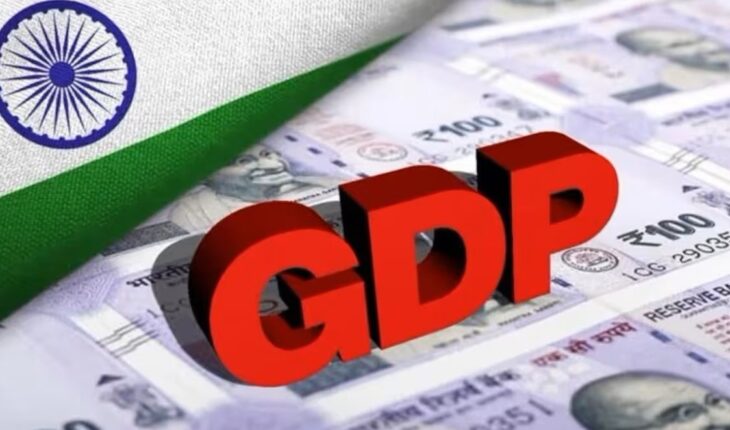According to the Ministry of Statistics and Program Implementation (MOSPI), from February 2026, the base year for calculating Gross Domestic Product (GDP) will be changed from 2011-12 to 2022-23. To implement this initiative, the government has constituted a 26-member advisory committee under National Accounts Statistics, which includes the Central and State Governments representatives, Reserve Bank of India, academics and other research teams.
The GDP in the second quarter of the current financial year was 5.4 percent, which is the lowest level in the last 7 quarters. The main reason for the decline is the significant decrease in the growth rate in the manufacturing and mining sectors. The GDP growth rate in the first quarter was 6.7 percent, while the GDP growth rate in the second quarter of the financial year 2023-24 was 8.1 percent. It is believed that after changing the base year for GDP calculation, the GDP figures will become more accurate, because after the change, the figures will be compared based on the values of the proposed base year 2022-23. This will give statisticians an opportunity to correct the mistakes being made at present.
The proposed change will move the base year 10 years ahead, which will provide more updated and accurate data for GDP calculation, as the difference between the prices of various products during the proposed base year 2022-23 and the prices during the financial year 2026-27 or onwards will be reduced.
Accurate data will help policymakers get a correct idea of the structural changes in the economy. Also, it will help in better understanding the consumption pattern, regional contribution i.e. how much contribution the states and emerging new sectors have in GDP etc. This will bring accuracy in the assessment of GDP and the policy makers of the country will be able to take the country forward on the path of development. Also, it will be easier for the government to give concrete shape to welfare schemes in the country, ensure inclusive development etc.
It is worth noting that for a long time the government was in discussions with the states, central bank, academics etc. to change the base year of GDP calculation. Earlier, the government had made 2011-12 the base year for GDP calculation. The first estimate of national income in India was published by the Central Statistical Organization in the year 1956, the base year of which was 1948-49. Over time, along with the improvement in the availability of data, changes were also made in the methodology of calculation.
The base year is used for comparison in the measurement of business activity or economic or financial index. For example, 2016 is the base year to find out the inflation rate between 2016 and 2024.
GDP is the most reliable measure of the health of the economy. Under this, the price of finished products and services is calculated during a certain period, which is usually 1 year, which also includes foreign companies that produce within the country’s borders.
There are two types of GDP. Real GDP and Nominal GDP. In real GDP, the price of products and services is calculated at the base year price or constant price, while nominal GDP is calculated at the current price. The formula used to calculate GDP is GDP=C+G+I+NX, here C means private consumption and G means government consumption. At the same time, I mean investment and NX means net import.
There are 4 factors that cause fluctuations in GDP rate. First, expenditure by the common man. This expenditure strengthens the economy. Second, growth in private sector business. Currently, the private sector contributes 32 percent to GDP. Third is the expenditure made by the government. Today, the government is spending 11 percent of GDP on the production of various products and service sector and fourth is net demand in context of difference between export & import. For this, India’s total exports are subtracted from total imports. At present, India imports more than exports, which has a negative impact on GDP figures as trade deficit can result in the loss of jobs and industries in sectors where the country is less competitive compared to foreign producers. This can lead to unemployment and structural economic challenges, especially if there are few alternative industries to absorb displaced workers.
Despite calculating GDP figures on the prices of base year 2011-12, the Indian economy is currently one of the fastest growing economies in the world. Not only this, in the eyes of global rating agencies, the Indian economy is continuously getting stronger despite facing the negative effects of the Corona pandemic.
The International Monetary Fund has maintained India’s GDP growth forecast for the financial year 2024-25 at 7.00 percent, while it has projected GDP to remain at 6.5 percent during the financial year 2025-26. At the same time, the World Bank has increased India’s GDP growth forecast for the financial year 2024-25 from 6.6 percent to 7.00 percent, while the Reserve Bank has reduced the GDP growth forecast for the financial year 2024-25 from 7.2 percent to 6.6 percent.
To understand the health of the economy, it is important to analyse Gross Value Added (GVA) along with GDP. GVA figures are more accurate than GDP figures and help to present the real picture of the economy. Unlike GDP, GVA is the value obtained by subtracting intermediate consumption from the country’s production, which is the difference between gross production and net production.
GDP is an important economic indicator and its calculation finalizes the GDP figures according to private and public consumption, investment, government expenditure, purchase of raw materials, construction cost and trade deficit caused by the difference between exports and imports. GDP is also a mirror of the country’s economic performance. With its help, economic development is compared between countries. Therefore, it is necessary for the GDP figures to be correct and accurate. From this point of view, changing the base year of GDP calculation will bring the real picture of the country’s economy in front of us, so that the government can pay special attention to strengthen the weak sectors as well as make a concrete policy to ensure inclusive development in the country and implement it.
Satish Singh, Ahmedabad Based Senior Columnist, views are personal.





